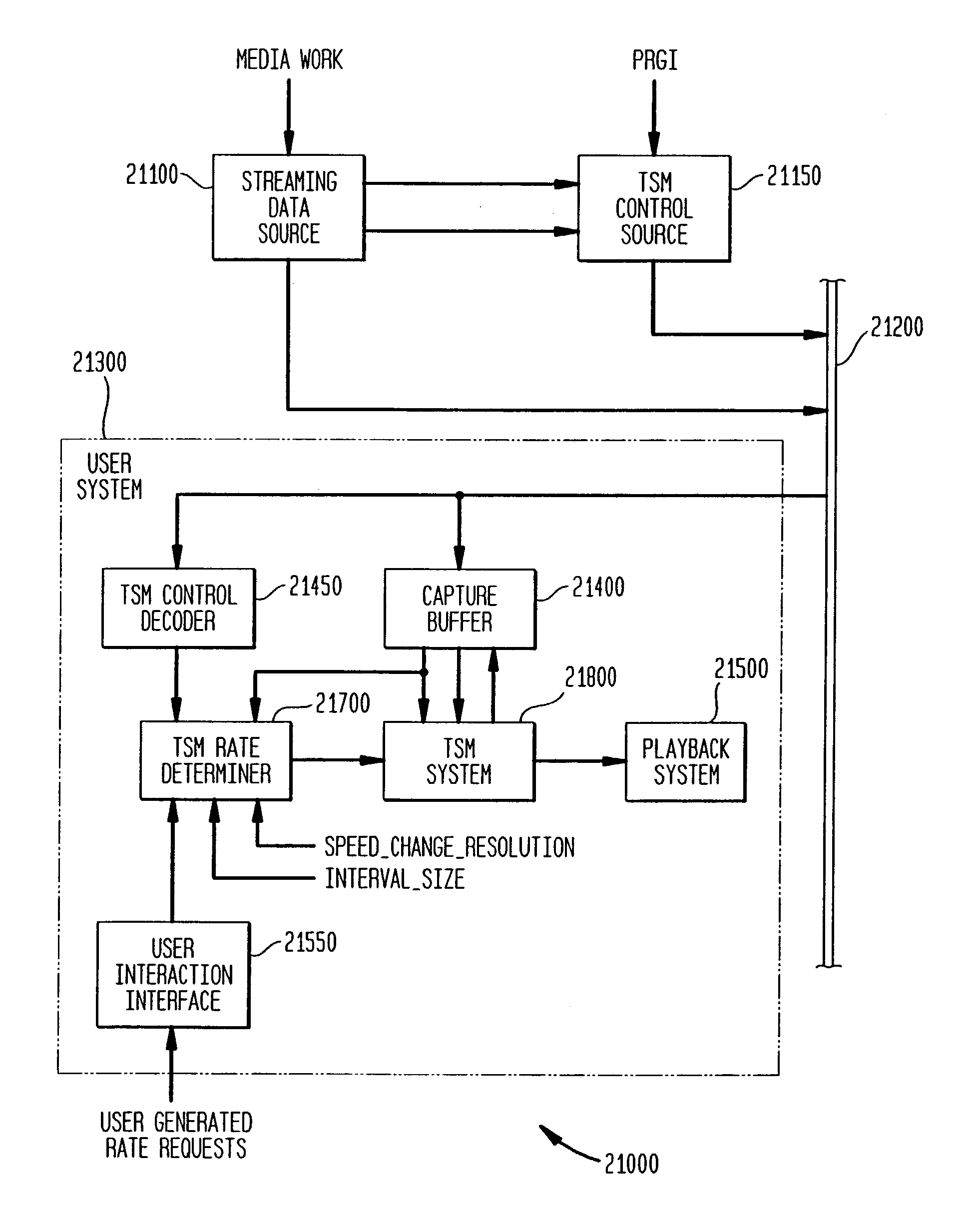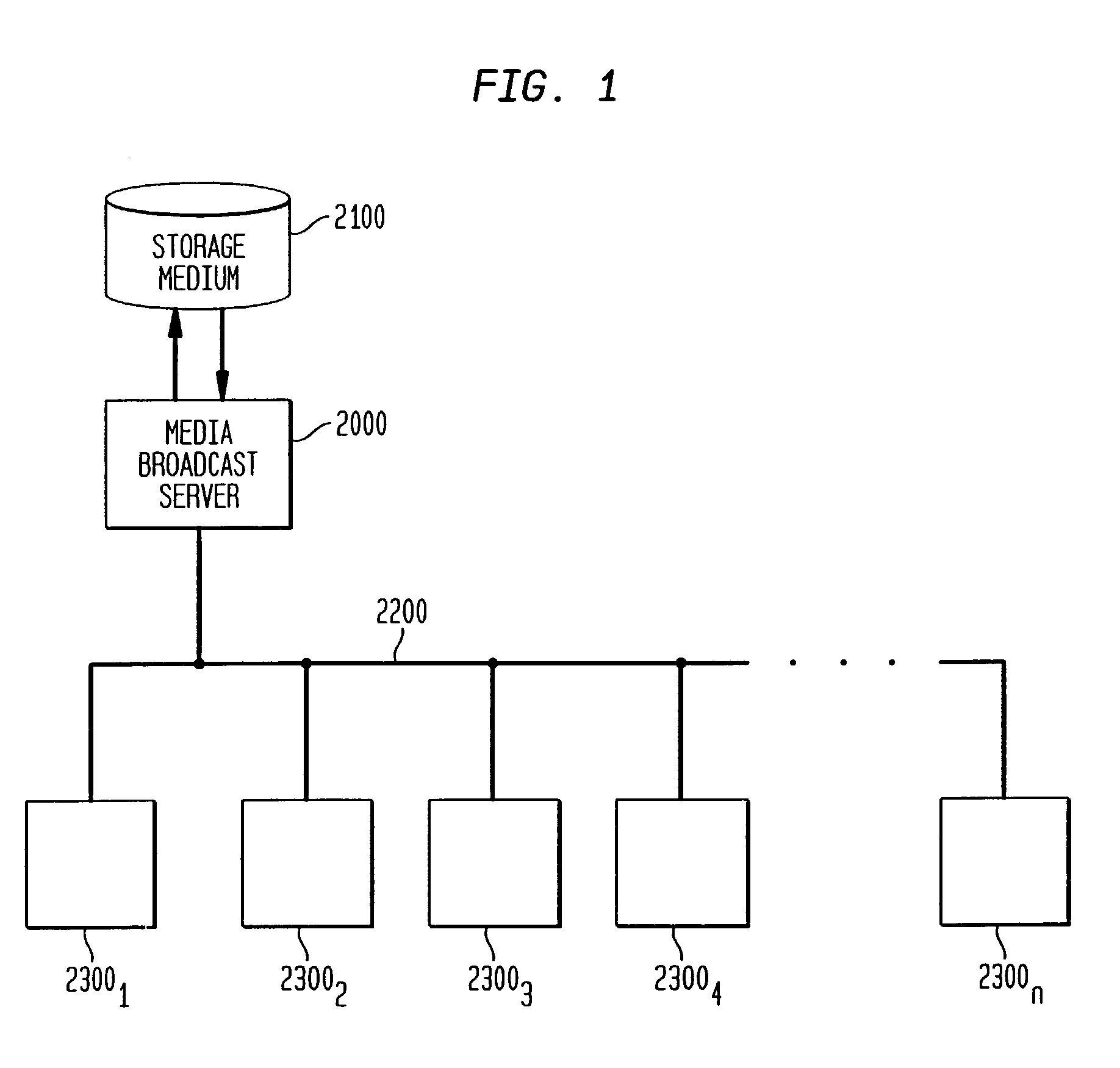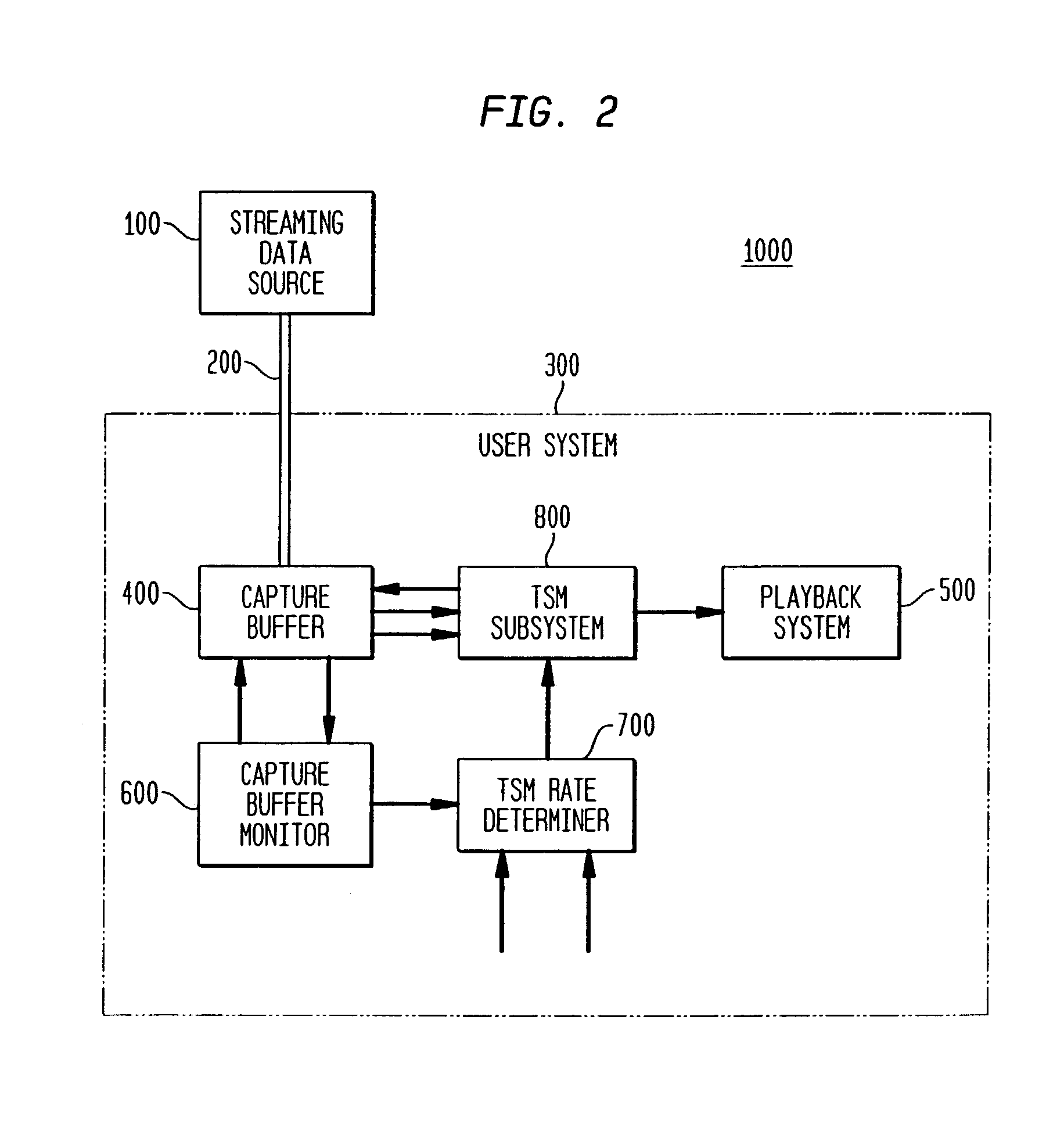Method and apparatus for controlling time-scale modification during multi-media broadcasts
a multi-media and time-scale technology, applied in the field of multi-media broadcasting and presentation of broadcast multimedia, can solve the problems of poor playback effect, little or no interest, and the viewer/listener must wai
- Summary
- Abstract
- Description
- Claims
- Application Information
AI Technical Summary
Benefits of technology
Problems solved by technology
Method used
Image
Examples
embodiment 1000
[0033]FIG. 2 shows a block diagram of embodiment 1000 of the present invention which provides substantially continuous playback of an audio or audio-visual work received from a source having non-deterministic delays such as a server (for example, a file server or a streaming media server) broadcasting via the Internet. As shown in FIG. 2, streaming data source 100 provides data representing an audio or audio-visual work through network 200 to User System 300 (US 300), which data is received at a non-deterministic rate by US 300. Capture Buffer 400 in US 300 receives the data as input. In a preferred embodiment of the present invention, Capture Buffer 400 is a FIFO (First In First Out) buffer existing, for example, in a general purpose memory store of US 300.
[0034]In the absence of delays in arrival of data at US 300 from network 200, the amount of data in Capture Buffer 400 ought to remain substantially constant as a data transfer rate is typically chosen to be substantially equal t...
embodiment 3000
[0056]FIG. 7 shows a block diagram of embodiment 3000 of a media server which re-broadcasts an audio or audio-visual work at regular intervals. As shown in FIG. 7, Storage Device 3100 is a storage device of a type which is well known to those of ordinary skill in the art. Storage Device 3100 stores a representation (preferably a digital representation, or any representation that can be converted to a digital representation in accordance with methods which are well known to those of ordinary skill in the art) of an audio or audio-visual work or data of interest to a user (such as a stream of stock quotes, market data, advertisements, and so forth). Storage Device 3100 receives, as input, data requests from Work Streamer 3200, and provides, as output, the data requested.
[0057]As further shown in FIG. 7, Work Streamer 3200 receives as input: (a) a code (for example, a number) which represents a desired Re-broadcast Interval (“RBI”) (from Re-broadcast Interval Determiner 3700); (b) a co...
embodiment 4000
[0062]Conversely, components of embodiment 4000 may exist in separate locations connected to one another by a network or any other communication means (where the use of the term means is used in the broadest sense possible).
[0063]In accordance with this embodiment of the present invention, an audio or audio-visual work is encoded into data that is later decoded to recreate the original audio or audio-visual work. Those of ordinary skill in the art should readily appreciate that the amount of data that represents a particular portion of the audio or audio-visual work can be transmitted, re-broadcast, and / or accessed from Storage Device 3100 in a time interval that is significantly less than the playback time interval of the particular portion. FIG. 8A shows the playback time of segments (Seg0, Seg1, . . . , SegN) of an original audio or audio-visual work, plotted along time axis 3001. The segments are encoded as data in accordance with methods that are well known to those of ordinary...
PUM
 Login to View More
Login to View More Abstract
Description
Claims
Application Information
 Login to View More
Login to View More - R&D
- Intellectual Property
- Life Sciences
- Materials
- Tech Scout
- Unparalleled Data Quality
- Higher Quality Content
- 60% Fewer Hallucinations
Browse by: Latest US Patents, China's latest patents, Technical Efficacy Thesaurus, Application Domain, Technology Topic, Popular Technical Reports.
© 2025 PatSnap. All rights reserved.Legal|Privacy policy|Modern Slavery Act Transparency Statement|Sitemap|About US| Contact US: help@patsnap.com



